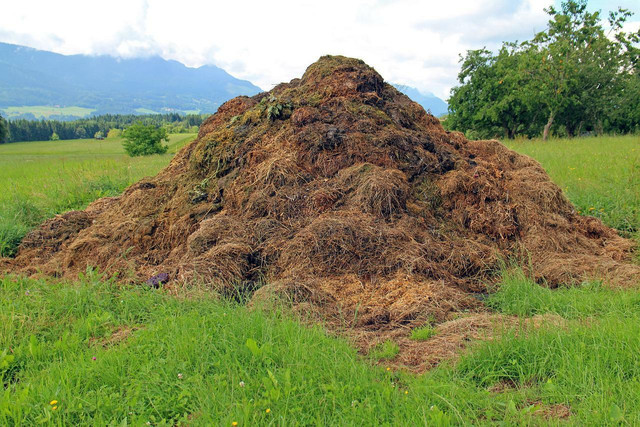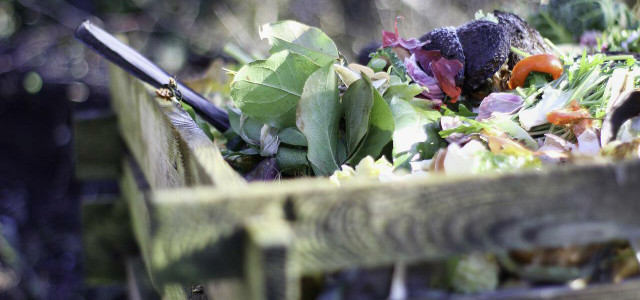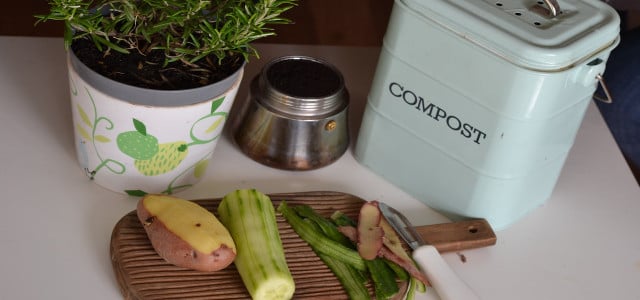Tired of babysitting your compost pile? Cold composting is a low-maintenance alternative that allows you to ignore your compost and get the same results. Read on for how to get started.
Compost is perhaps the best soil amendment out there: the dense nutrients, fluffy texture and moisture retention can bring out the best in your garden. While doable at home, typical compost piles require regular mixing and watering to stimulate decomposition and keep microorganisms happy.
If you think typical, or “hot” composting is a hassle, then cold composting might be for you. Unlike hot composting, with cold composting you can set it and forget it. This is because cold composting doesn’t rely on constant heat, which is generated from the breakdown of organic material, but on time: the slow decomposition can take an entire year for a cold compost pile to be ready.
Simply toss your organic waste into the pile throughout the growing season. This is the ideal solution for beginner gardeners who don’t have the time to baby their compost and can wait until the spring for results.
For more detailed information about the composting process, check out our article How Does Composting Work? A Step-By-Step Guide.
Cold Composting Drawbacks



(Foto: CC0 / Pixabay / Antranias)
The main attraction of cold composting is how low-maintenance it is: simply set up your pile, ignore it, or add kitchen scraps as they accumulate. While this solution is ideal for those with busy schedules, there are a few noteworthy drawbacks:
- While hot composting can take only a month or two, cold composting can take longer than one year.
- The lack of high heat means that pathogens, weed seeds, or pests might survive. For this reason, you should never compost meat or weeds in a cold pile.
- Lack of manual aeration means that the pile might become completely anaerobic and become a foul-smelling mess. This also means the pile can become soggy or dry out without maintenance.
- Cold compost piles do not decay evenly. Materials on the bottom will often have broken down before the materials on top.
- Slow decomposition also means that your pile might attract more pests than a hot pile.
How to Cold Compost



(Foto: CC0 / Pixabay / jag2020)
Cold composting follows the same basic steps and ingredients as regular hot composting, but the pile needs to be set up carefully before you forget it:
- A cold compost pile will last all year, so select a spot carefully.
- Since a cold compost pile requires no turning, it needs adequate support in the form of sticks, cardboard, or branches to create pockets of air. Layer these down first before adding other material on top.
- Layering brown carbon-rich materials with green nitrogen-rich layers is essential when there is no manual mixing. Always put brown on top to insulate your pile and deter pests.
- Add organic waste throughout the warm growing season, but avoid adding anything during the winter (since it won’t decompose). Instead, cover your pile in a tarp or layer of leaves during the fall to insulate it in winter.
- Your cold compost pile will likely be ready for your garden by springtime. Check the bottom of the pile first, as the material there will likely be fully broken down. Fresher layers with undecomposed items should be left in the pile.
- Composting grass clippings or composting leaves in large quantities is risky since these can mat together and prevent airflow: use small amounts and make sure to layer with sticks or twigs.
- Any compost turning or mixing can be beneficial in speeding up decomposition, even if done only once or twice.
Read more:
- How to Amend Clay Soil Naturally: 6 Simple Methods
- Can You Dispose of Wood Ash in the Compost?
- How to Compost in an Apartment: 4 Options & Tips
Do you like this post?







